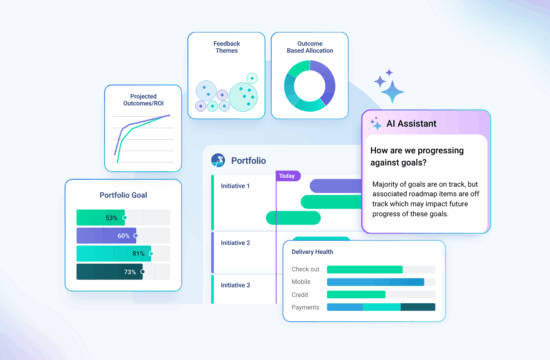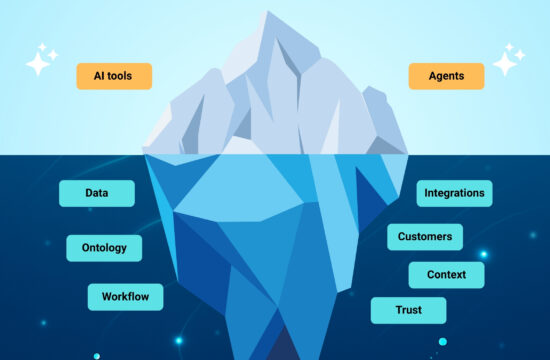In today’s fast-paced, dynamic business landscape, companies are constantly juggling competing priorities. The most common questions leaders ask are:
- Where should we invest our limited resources?
- How do we ensure execution aligns with evolving strategies?
- How do we move fast without losing focus?
These are the kinds of questions that Strategic Portfolio Management (SPM) helps answer.
What Is Strategic Portfolio Management, and Why Does It Matter?
Strategic Portfolio Management (SPM) is the practice of aligning investments, resources, and execution with business strategy and desired outcomes. It ensures that teams aren’t just doing work, but doing the right work, that drives meaningful impact.
According to Gartner, only 13% of organizations are highly effective at the three core attributes of SPM: portfolio alignment, portfolio flexibility, and value-based decision-making. But those that do are twice as likely to meet or exceed business outcomes.
Traditional SPM frameworks emerged in IT and project-heavy environments, offering predictability and control, but not speed or adaptability. In today’s product-led, customer-centric landscape, that’s no longer enough. To thrive, today’s organizations need to continuously adapt, and traditional SPM isn’t built for that.
Why Agile and Product Operating Models Break Down at Scale?
Agile and product operating models aim to empower teams to move fast and make customer-driven decisions. But scaling them often exposes major gaps:
- Siloed Empowerment: Teams operate independently but lack alignment with broader goals and strategy.
- Limited Strategic Context: Teams lack visibility into how their work ties into cross-functional goals.
- Cross-Team Dependencies: Coordination breaks down across products and platforms, causing delays.
- Duplicate or Conflicting Efforts: Without visibility, teams may unknowingly work on overlapping or misaligned initiatives.
- Manual Reporting & Data Handoffs: Leaders rely on spreadsheets and status meetings to track progress — slowing decision-making.
As a result, agility is stifled. This friction creates burnout, slows innovation, and derails strategy.
“Empowered teams” without strategic alignment is like giving each musician a different song sheet. You won’t get a symphony—you’ll get noise.
Learn more about product operating models.
How Modern Strategic Portfolio Management Supports Agile, Product-Led Organizations
To scale agility, organizations need a way to orchestrate empowered teams toward a shared direction. That’s where modern Strategic Portfolio Management (modern SPM) comes in.
Modern SPM supports agile product organizations by:
- Incorporating Customer Feedback: Priorities are driven by customer outcomes, not just internal goals.
- Enabling Continuous Planning & Adjustment: Teams can adjust the course quickly as data and priorities evolve.
- Connecting Strategy to Execution: Every team sees how their work ladders up to company goals.
- Creating Visibility and Focus: Leaders can spot risks and blockers early, adjust, and guide work across the portfolio.
- Promoting Cross-Functional Collaboration: Teams work in sync, not in silos.
This type of SPM doesn’t slow teams down—it accelerates them, giving them the context and connection they need to deliver impactful outcomes at scale.
Learn more about Agile Portfolio Management.
How Should Large Product Organizations Operate to Achieve Agility at Scale?
To scale successfully, large product organizations need more than empowered teams—they need alignment and orchestration across the board.
Here’s what high-performing product organizations do differently:
- Product Strategies Link to Business Goals: Each product or initiative directly supports strategic objectives.
- Teams Align on Roadmaps: Shared visibility into roadmaps reduces conflicting efforts and dependency chaos.
- Cross-Team Visibility: Dependencies and tradeoffs are managed proactively, not reactively.
- Real-Time Information: Teams make decisions using current data, not outdated slide decks.
- Customer-Centric Planning: Customer outcomes are central to portfolio decisions, not an afterthought.
This level of orchestration enables both speed and strategy. Without this orchestration, agility stalls under the weight of scale.
The best organizations don’t just build fast—they build the right things, fast. That’s the real goal of modern SPM.
Learn how to Achieve Your Strategic Plan Across Your Product Portfolio.
Why Traditional SPM Tools Fall Short for Modern Organizations
Legacy SPM tools like Planview, Planisware, and Clarizen were built for a world of centralized command and control. They tried to solve the scaling problem with process—not with flexibility or context.
These tools often:
- Enforce rigid planning cycles (e.g., annual waterfall-style plans).
- Require months of configuration and professional services.
- Support project-focused execution, not customer-centric outcomes.
- Create silos between product, engineering, and finance teams.
- Lack native integration with modern work tools (like Jira or ADO)
The result? Governance without agility. Process without progress. Legacy tools can track your portfolio—but they won’t help you lead it.
Discover Why Agile Organizations Need Responsive Portfolio Management.
What Does Modern SPM Look Like?
Modern SPM flips the script. Instead of locking teams into rigid frameworks, it creates a connective layer across strategy, planning, and execution—while honoring the autonomy of agile teams.
Modern SPM enables:
- Autonomous Execution: Teams use their preferred tools and agile processes.
- Shared Strategic Context: Everyone knows where the organization is heading and why.
- Iterative, Continuous Planning: Plans adapt as insights and data evolve.
- Portfolio-Level Visibility: Leaders make decisions with real-time data, not static spreadsheets.
- Product and Customer-Centricity: Roadmaps are driven by customer impact, not just timelines and budgets.
In short, modern SPM helps you move together, even when moving fast.
How Dragonboat Is Purpose-Built for Modern Strategic Portfolio Management
Dragonboat is the only AI-native SPM platform built specifically for product-led, agile organizations. It brings together strategy, customer insights, and execution into one connected system.
Here’s how:
- Faster Time to Value: Modular onboarding in weeks—not months.
- AI-Powered Planning & Insights: Smart scenario planning, risk alerts, and automated tracking.
- Seamless Integrations: Connects with Jira, ADO, and more for real-time execution visibility.
- Outcome-Based Planning: Align initiatives with business and product outcomes—not just outputs.
- Built for Product & Strategy Leaders: Intuitive and flexible for business leaders—not just PMO admins.
With Dragonboat, you don’t have to choose between structure and agility. You get both—without the friction.
Hear how Carfax drives strategic impact with Dragonboat in our AMA with Aaron Hall, VP of Portfolio Management.
Your Strategic Portfolio Management Approach Shapes Your Culture
Strategic Portfolio Management is more than a planning process. It’s a reflection of how your organization thinks, collaborates, and delivers.
Want alignment and agility?
Want accountability without micromanagement?
Want customer outcomes instead of just activity metrics?
Then your tools and approach need to support that. Don’t let legacy tools lock your organization into outdated ways of working. Modern SPM enables empowered teams, faster decisions, and impactful outcomes—at scale.
Ready to future-proof your portfolio strategy? Book a Demo with Dragonboat and build a smarter, faster, more aligned organization.
Categories
Product Leadership | Product Operating Model | Product Portfolio Management
Share on Social



